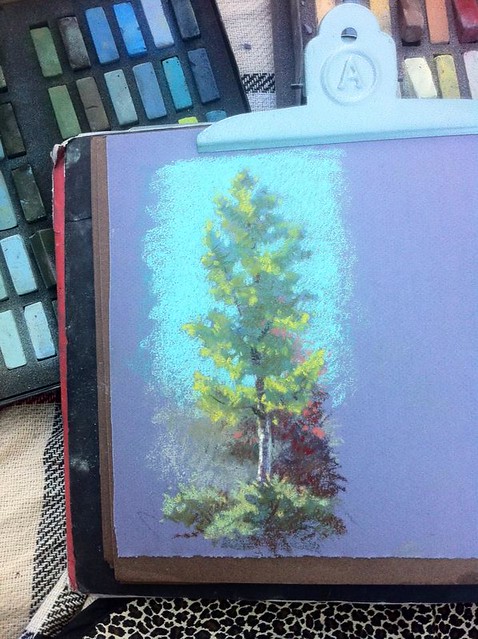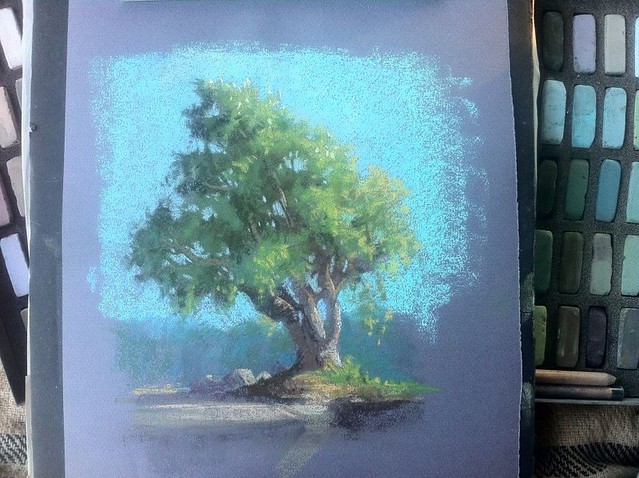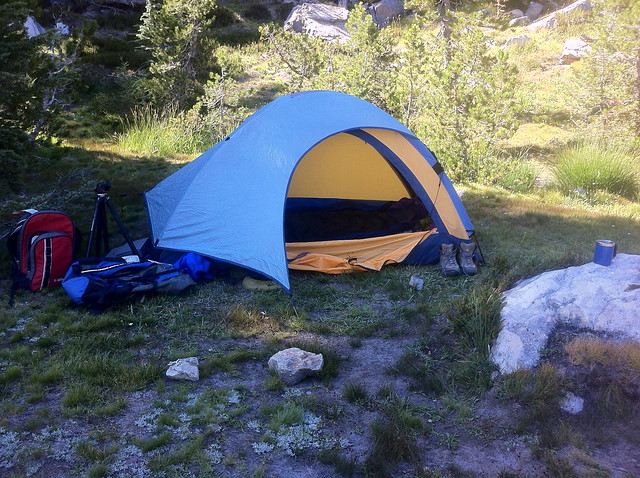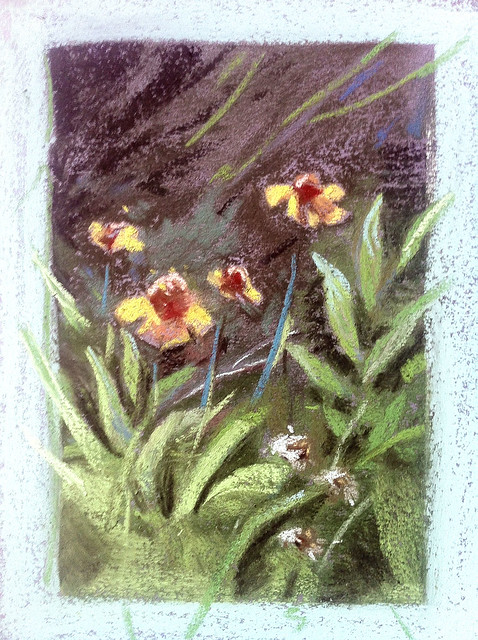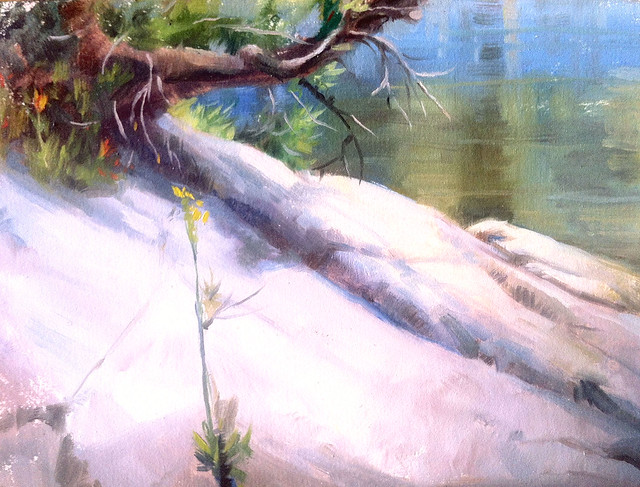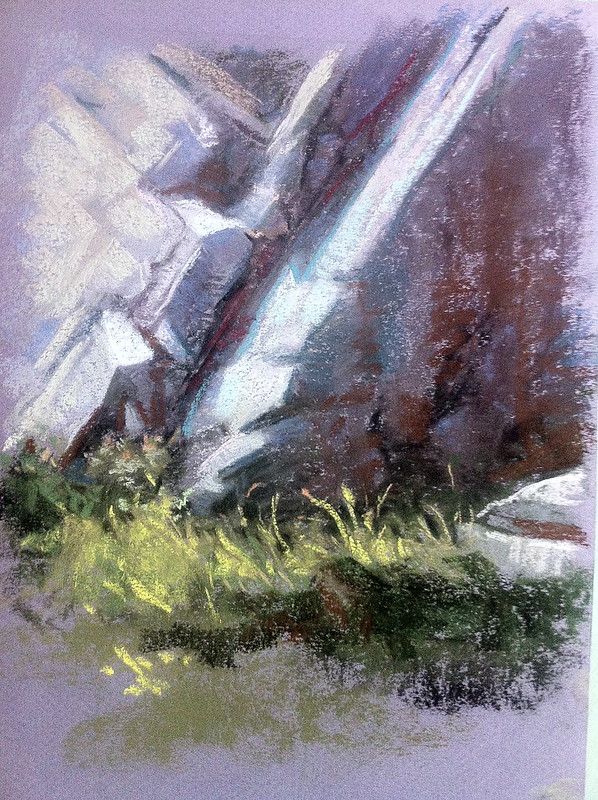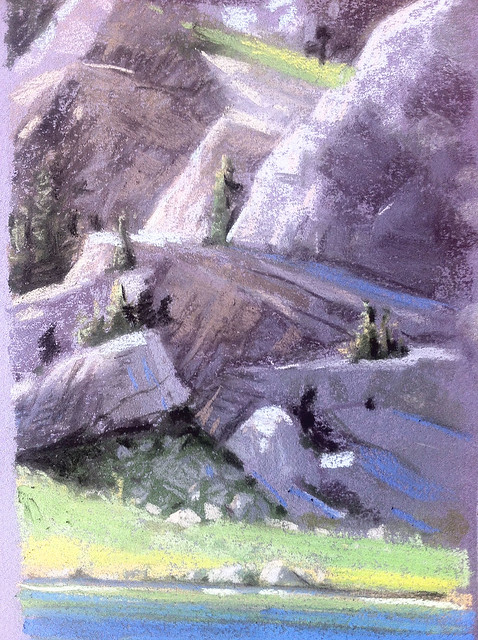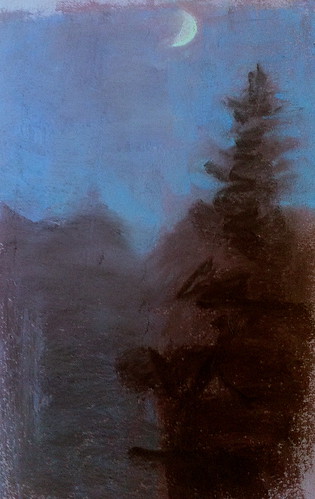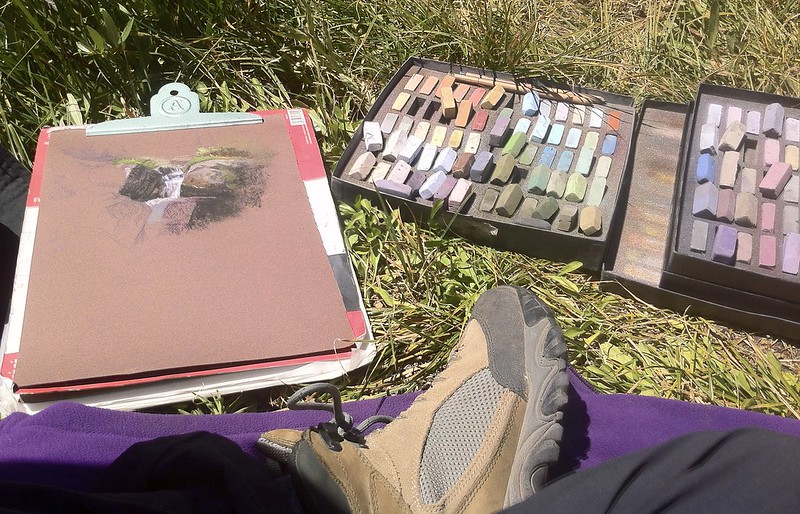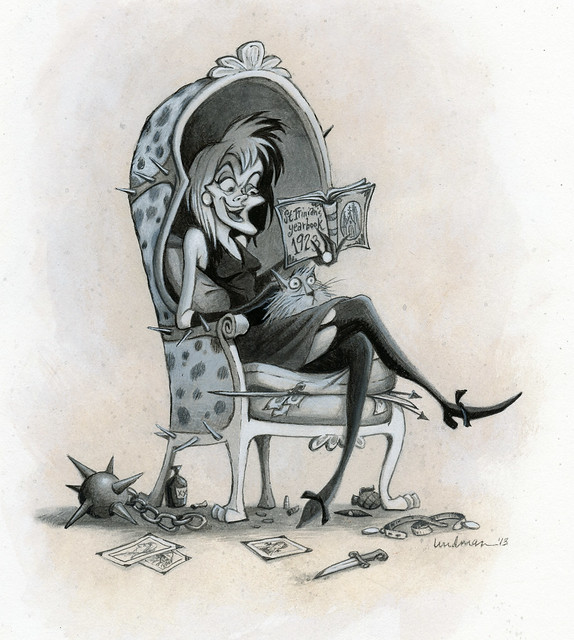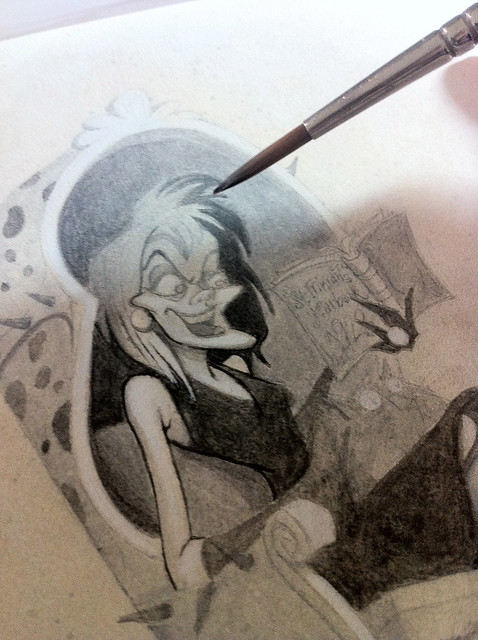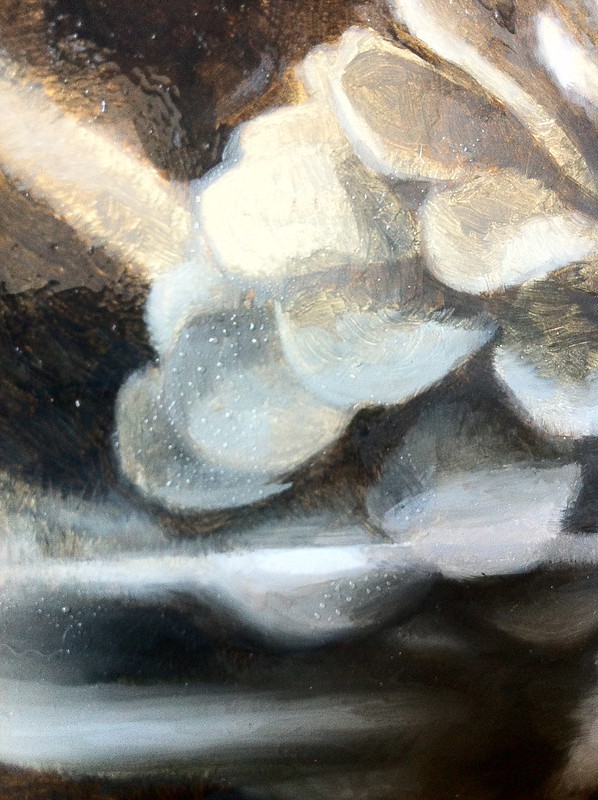This was a rough week at Disney Interactive. 700 of my coworkers, many of them talented and accomplished artists, were subject to a massive layoff and restructure. Over half of my office, which is Disney Social/Mobile, a division within Disney Interactive, was let go. The fact is that we all knew lay offs were coming for at least three months now, making our lives incredibly stressful. What none of us knew was how drastic the cuts would be.
I am deeply sorry to lose so many wonderful artists at Disney Interactive, ones that really should be employed at companies so they can continue to contribute to the way in which we encounter Art in our everyday lives, in games, online entertainment, mobile devices, television, and film.
Surviving in the entertainment industry as a professional artist is difficult no matter how you cut it. If you work as an artist in games, television or film, you are constantly subject to the whims of the market and where it decides to spend money, or new technologies, or shifts in the philosophy or ownership of the company. In the 20 years I have been working, I have had to refocus my portfolio and career numerous times, first working in traditional animation, then in cd rom games, print illustration, book illustration, then web cartoons, to various platform games, to online games and now mobile gaming. I can't say that I ever feel secure. As a way to cope with that, I've found that constant study keeps me motivated and feeling in control of my artistic interests, regardless of what happens at work. Even so, it does not take away the sting I feel when fellow artists lose their jobs, as I've seen happen a lot over the years, including myself at times. I feel fortunate to survive, and also sad for Art.
****************************************
iPad Sketching
I recently got an iPad air over the holidays. In addition to my tree studies, for some time now I've wanted to study the lighting and staging of various live action shows that I admire. So I thought I'd start with a few shows, freeze frame the shot I like and do an observational study.
I like to use two styluses, the Intuos Creative Stylus, which has a bluetooth connection with the iPad (although I can't really tell what the difference is between when its on and when its off) and the Nomad brush stylus. I like to use them together as each has a different feel, much like I would brushes of any real life painting.
I've also played around with various apps. There are so many out there, and I'm pretty sure I've tested them all at this point. The app I like the most is Procreate. It feels like photoshop, but has the basic stripped down interface that I need for painting, and adjusts that interface to work well on a touch screen. Other apps are clunky for various reasons, but Procreate has gotten it right.
Violet Crawley, The Dowager Countess of Grantham in "Downton Abbey".
My first few attempts were frustrating because it seems that I cannot get the brush size or shape working well enough for me. Also, there is a slight lag between touching the screen and the brush stroke that is a little distracting. Other problems include the color palette; so often the color I thought I chose in the palette is not actually the right value.
Worf from Star Trek Next Generation.
The above painting of Worf was a little frustrating too because I felt like I was fighting the pen controls the entire time. Also, when I exported it to my photo stream, the painting became darker.
I then tried a bigger scene to see how it works for capturing an entire shot, not just a portrait. I found the brush controls really difficult in that case. The city in the distance for instance is really rough, not all how I was attempting to paint it, but an ok study of the general set up and lighting.
Game of Thrones, Season 3, episode 2. Daenerys Stormborn on her newly acquired ship headed to Astapor.
Game of Thrones Season 3, episode 3. Daenerys Stormborn after she unleashes her dragon Drogon on the leaders of Astapor. (that must have been supremely satisfying!)
I love the lighting in this shot. I struggled with the styluses in this painting, trying to use the brushes to obtain a likeness in the eyes, nose and mouth, but finally decided that I need to think of these studies as just that, color studies.
I plan to continue on to study shots and lighting. Its so far been a pretty enjoyable exercise overall. My hope over time is to build up some color script studies from sequences in shows I like. It will be cool to put them all together to see a progression. I have a massive list of shows and films I'd like to analyze…I'll need to chip away at them a little at a time.
Thanks for reading! My next post will be about the flemish still life I am working on - lots of progress on that!
I am deeply sorry to lose so many wonderful artists at Disney Interactive, ones that really should be employed at companies so they can continue to contribute to the way in which we encounter Art in our everyday lives, in games, online entertainment, mobile devices, television, and film.
Surviving in the entertainment industry as a professional artist is difficult no matter how you cut it. If you work as an artist in games, television or film, you are constantly subject to the whims of the market and where it decides to spend money, or new technologies, or shifts in the philosophy or ownership of the company. In the 20 years I have been working, I have had to refocus my portfolio and career numerous times, first working in traditional animation, then in cd rom games, print illustration, book illustration, then web cartoons, to various platform games, to online games and now mobile gaming. I can't say that I ever feel secure. As a way to cope with that, I've found that constant study keeps me motivated and feeling in control of my artistic interests, regardless of what happens at work. Even so, it does not take away the sting I feel when fellow artists lose their jobs, as I've seen happen a lot over the years, including myself at times. I feel fortunate to survive, and also sad for Art.
****************************************
iPad Sketching
I recently got an iPad air over the holidays. In addition to my tree studies, for some time now I've wanted to study the lighting and staging of various live action shows that I admire. So I thought I'd start with a few shows, freeze frame the shot I like and do an observational study.
I like to use two styluses, the Intuos Creative Stylus, which has a bluetooth connection with the iPad (although I can't really tell what the difference is between when its on and when its off) and the Nomad brush stylus. I like to use them together as each has a different feel, much like I would brushes of any real life painting.
I've also played around with various apps. There are so many out there, and I'm pretty sure I've tested them all at this point. The app I like the most is Procreate. It feels like photoshop, but has the basic stripped down interface that I need for painting, and adjusts that interface to work well on a touch screen. Other apps are clunky for various reasons, but Procreate has gotten it right.
Violet Crawley, The Dowager Countess of Grantham in "Downton Abbey".
My first few attempts were frustrating because it seems that I cannot get the brush size or shape working well enough for me. Also, there is a slight lag between touching the screen and the brush stroke that is a little distracting. Other problems include the color palette; so often the color I thought I chose in the palette is not actually the right value.
Worf from Star Trek Next Generation.
The above painting of Worf was a little frustrating too because I felt like I was fighting the pen controls the entire time. Also, when I exported it to my photo stream, the painting became darker.
I then tried a bigger scene to see how it works for capturing an entire shot, not just a portrait. I found the brush controls really difficult in that case. The city in the distance for instance is really rough, not all how I was attempting to paint it, but an ok study of the general set up and lighting.
Game of Thrones, Season 3, episode 2. Daenerys Stormborn on her newly acquired ship headed to Astapor.
Game of Thrones Season 3, episode 3. Daenerys Stormborn after she unleashes her dragon Drogon on the leaders of Astapor. (that must have been supremely satisfying!)
I love the lighting in this shot. I struggled with the styluses in this painting, trying to use the brushes to obtain a likeness in the eyes, nose and mouth, but finally decided that I need to think of these studies as just that, color studies.
I plan to continue on to study shots and lighting. Its so far been a pretty enjoyable exercise overall. My hope over time is to build up some color script studies from sequences in shows I like. It will be cool to put them all together to see a progression. I have a massive list of shows and films I'd like to analyze…I'll need to chip away at them a little at a time.
Thanks for reading! My next post will be about the flemish still life I am working on - lots of progress on that!






